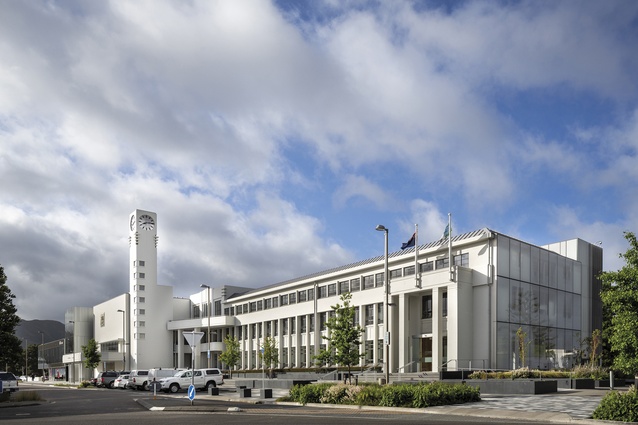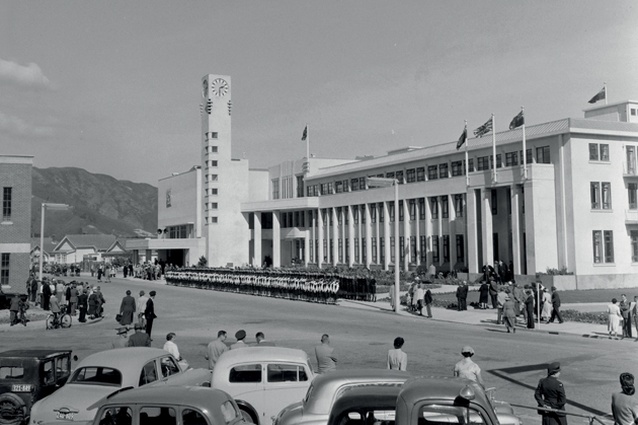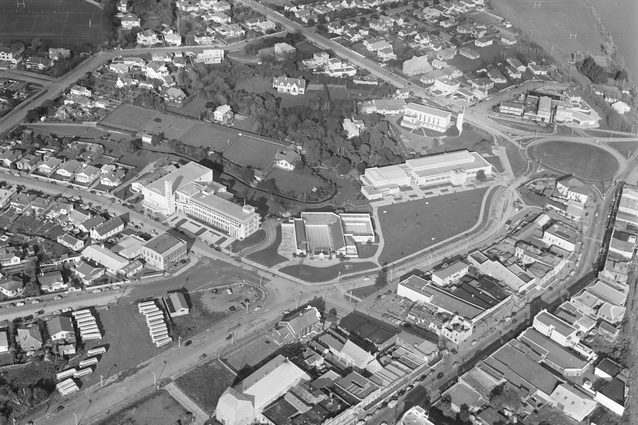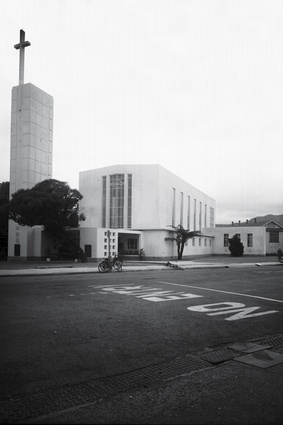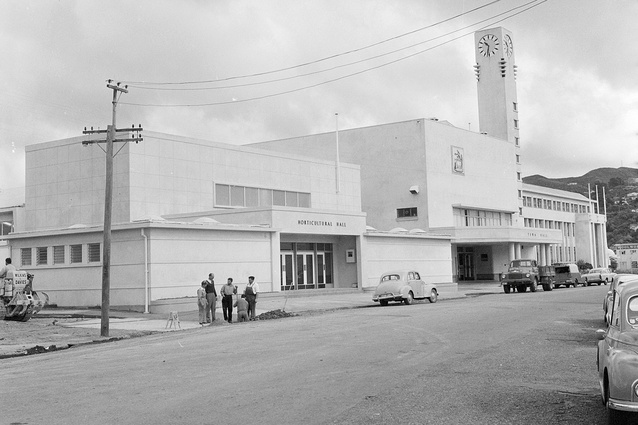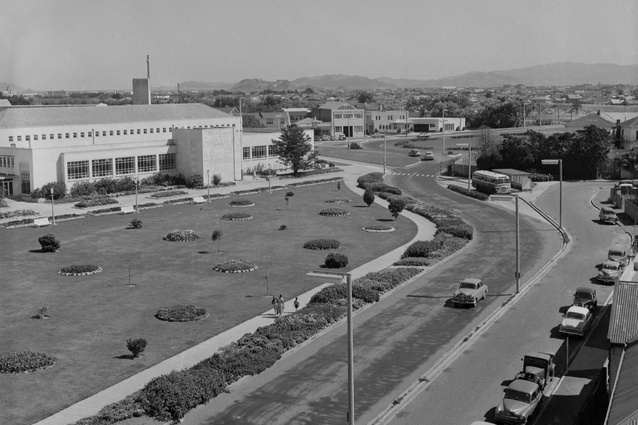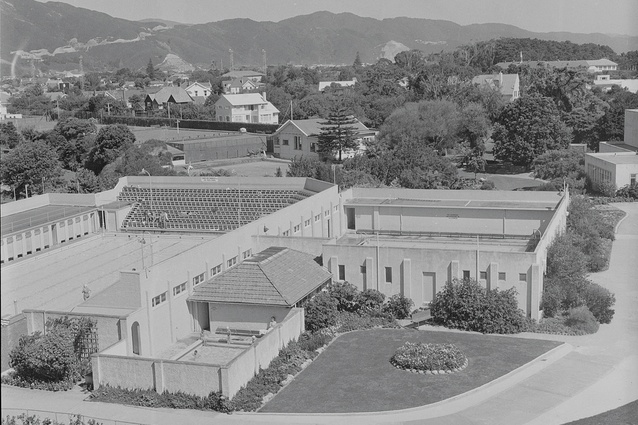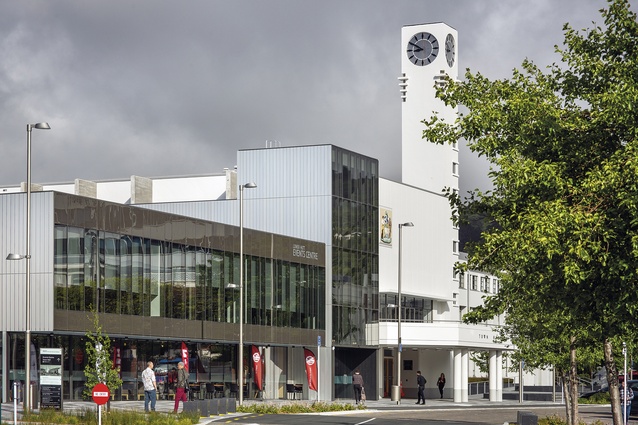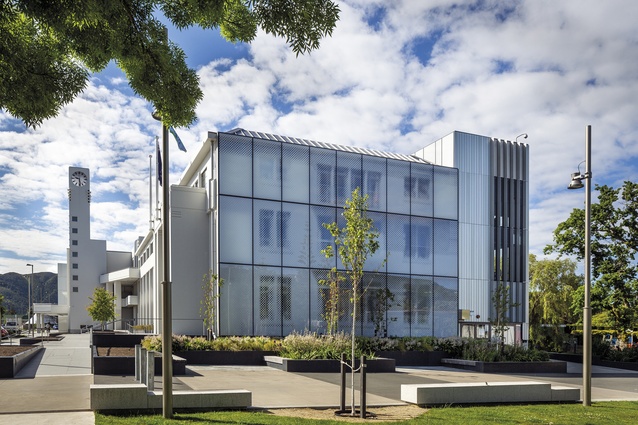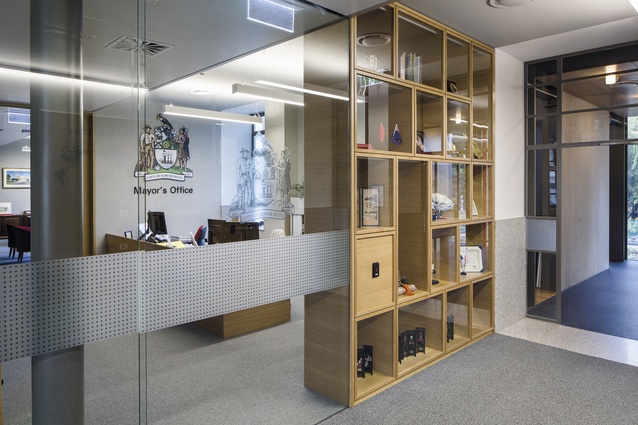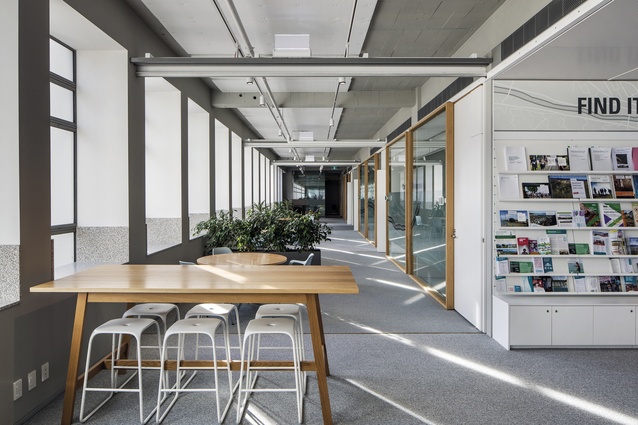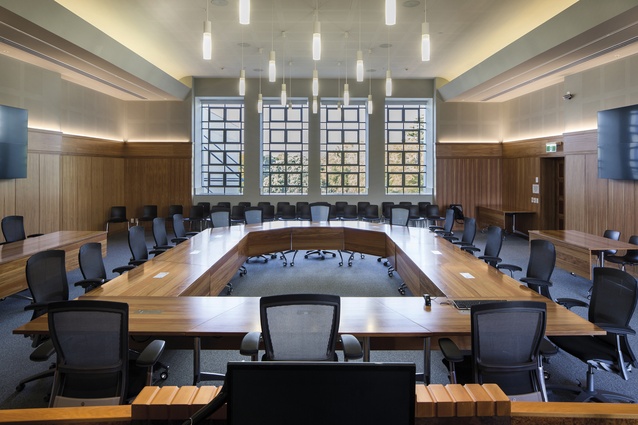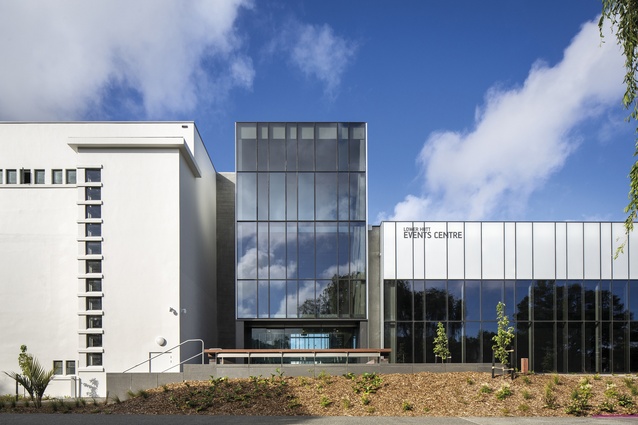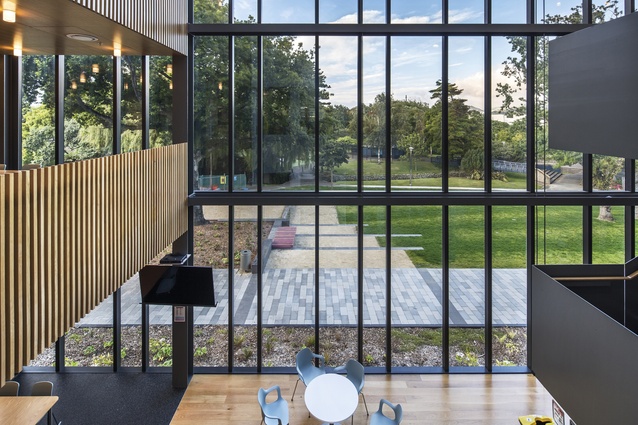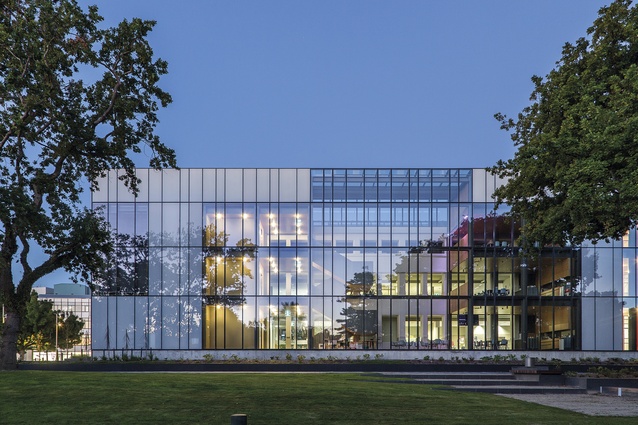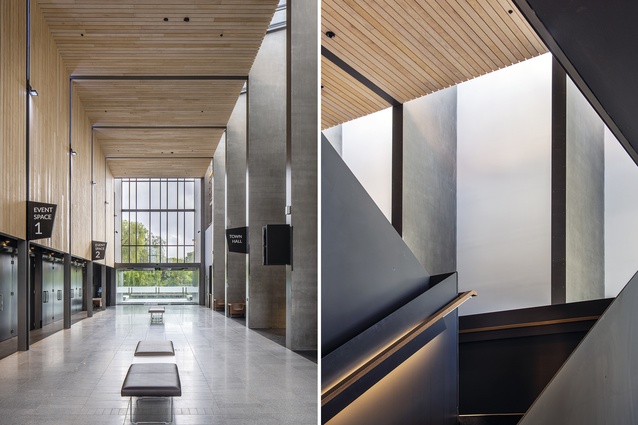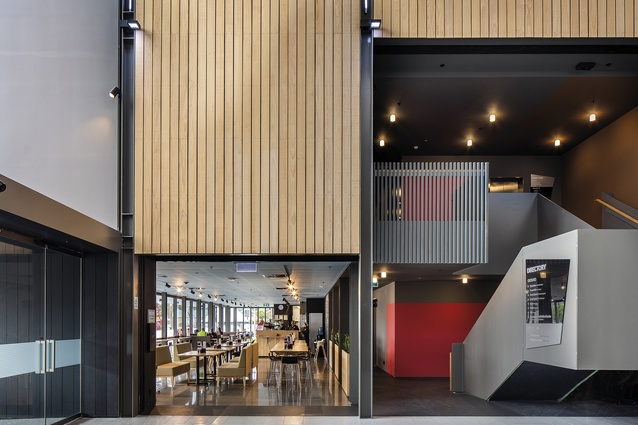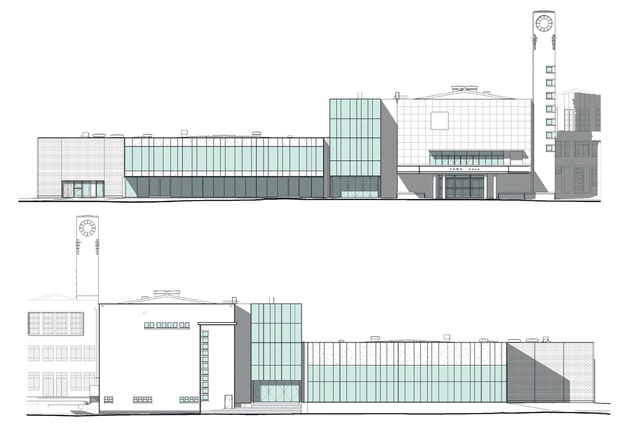Cinderella: Lower Hutt Civic Precinct
After the Second World War, Lower Hutt paved the way for modernist architecture in New Zealand with a new cohesive suite of civic developments. Justine Harvey gives a brief history of the ‘Cinderella City’ and Julia Gatley explores its recent rejuvenation.
New Zealand’s great modernist city
“Lower Hutt’s Civic Precinct is the only architecturally cohesive and complete set of modernist civic buildings situated in a garden setting in New Zealand,” suggests Lower Hutt City Council literature. In the decade after the Second World War, and following in the wake of the Garden City movement, some of New Zealand’s leading architects of the time explored the town planning and functional design aspects of modernism in Lower Hutt.
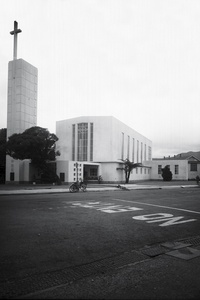
During this period, Lower Hutt had one of the fastest-growing populations in the country, doubling to more than 40,000 people between 1940 and 1952; this made it New Zealand’s fifth-largest city (it is now the seventh largest).
Consequently, new housing and commercial developments quickly rose up alongside a suite of new civic buildings in the modernist style. They were constructed in a bid to transform a “once drab and dowdy town into a Cinderella City,” according to The New Zealand Woman’s Weekly in April 1956.
Two local architectural firms, King, Cook & Dawson and the Structon Group, and a single building company, W.M. Angus Ltd, worked on the projects, resulting in a unified approach to design and construction. The architects followed modernist design principles, focused on strong cubic and rectangular forms, minimal ornamentation and the utilisation of lots of concrete, steel and glass.
The projects consisted of the St James’ Anglican Church, the War Memorial Library, the Council Administration building, Lower Hutt Town Hall and the Horticultural Hall, all set within the 3.2-hectare Riddiford Garden.
Since 2012, mirroring the effort to rejuvenate the city in the 1950s, Hutt City Council has invested in key infrastructure projects across the city to encourage growth and investment and to provide increased social and recreational opportunities for residents. Recently completed, the revitalised Lower Hutt Civic Precinct has been key to this programme of work. The Naenae Bowling Club is also part of this overall strategy.
– Justine Harvey
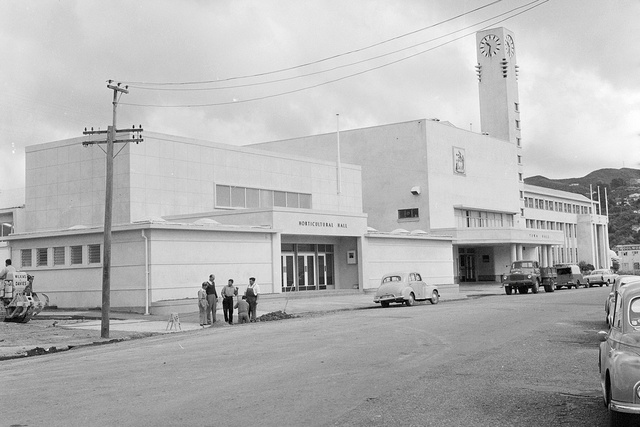
Lower Hutt Civic Precinct rejuvination
Politicians and decision-makers often find it difficult to understand that modern buildings can have heritage value. These buildings are vulnerable to insensitive change so sophisticated redevelopment projects need to be celebrated.
New Zealand is losing at least one recognised and admired modern heritage building per year. This is above and beyond the more extensive losses that followed the Canterbury earthquakes: notably, many of Peter Beaven’s best public buildings.
A roll-call of recent demolitions in parts of the country other than Christchurch includes: the Horticultural Hall, Lower Hutt (1957–1959), in 2014; St Joseph’s Church, Morrinsville (1958–1965), also in 2014; the Firth Concrete Offices, Hastings (1957–1958), in 2015; the Āniwaniwa Visitor Centre, Lake Waikaremoana (1973–1976), in 2016; ICI House, Wellington (1962–1965), in 2017; and the Maidment Theatre at the University of Auckland, also in 2017.
Under threat of demolition at the present time are the Upper Greys Avenue Flats in Auckland(1954–1959), its sibling building, the Gordon Wilson Flats in Wellington (1954–1959), and parts of the Teachers’ Training College complex in the Wellington suburb of Karori (1962–1975). In this climate, key modern buildings that survive threats of demolition and are revitalised and reopened need to be celebrated.
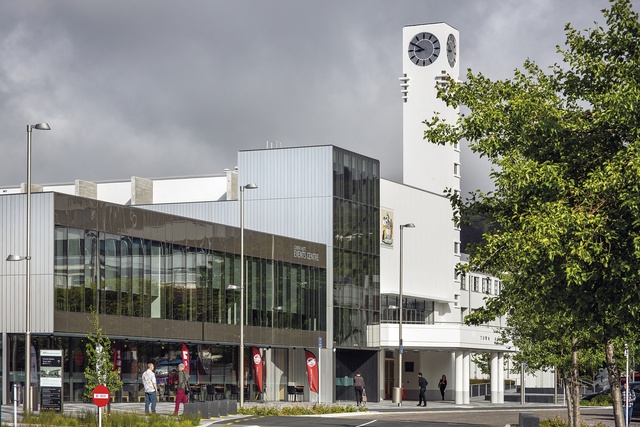
One such project is the strengthening, refurbishment and extension of Hutt City’s Town Hall and Administration Building (both 1951–1957) in Lower Hutt’s Civic Centre. The Architecture + project also included the addition of a new Events Centre, built in place of the demolished Horticultural Hall.
The new work takes its lead from the old in terms of scale, massing and geometry, while also being clearly identifiable as new through the use of a contrasting material palette; the additions are much more extensively glazed than are their 1950s’ counterparts. As a result of these strategies, the assemblage speaks directly to its neighbour, The Dowse Art Museum, a Structon Group building with an Athfield Architects addition from 2006.
It was not always going to be this way. In 2012, the Hutt City Council learnt that its civic complex was on land with the potential to liquefy in the event of an earthquake and needed seismic strengthening. It considered its options and, late in 2013, announced plans to demolish the Town Hall and the Horticultural Hall, and to replace them with a new conference centre. This triggered a campaign to save the old buildings.
At one level, conservation architect Ian Bowman and others in the Hutt architects small practice group prepared an alternative scheme for the council’s consideration. At another, a retired architect, Charles Sands, conducted a public campaign under the banner of Heart of the Hutt, organising public meetings, writing press releases, posting a video on YouTube, publishing a newsletter and collecting signatures for a petition.
Both groups argued for the retention of the Town and Horticultural Halls on the grounds of heritage value. The Lower Hutt Civic Centre is a Heritage New Zealand-listed historic area, comprising a series of mid-century buildings that are fundamental to the city’s architectural and urban image, their aesthetic value enhanced by their location alongside Riddiford Park.
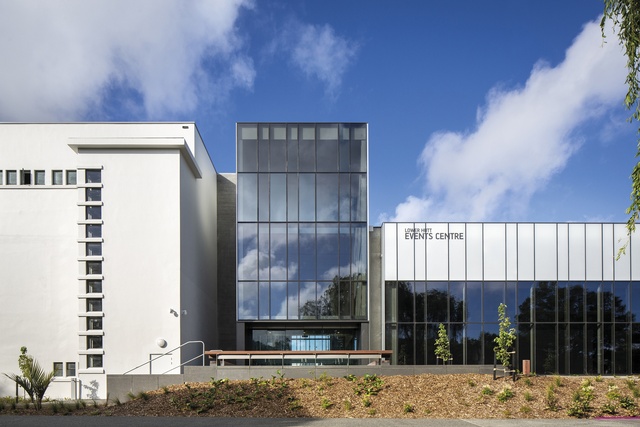
King, Cook & Dawson designed the Town Hall and Administration Building that take pride of place within the complex, confirmed by the Town Hall’s clock tower that serves as a local landmark. The firm also designed the Horticultural Hall. To the south and west of this collective are more Structon Group buildings: the War Memorial Library and Little Theatre (1951–1956) and St James’ Church (1952–1954).
The Dowse sits on the other (east) side of the administrative complex. All the buildings can be described as modern; the King, Cook & Dawson ones with horizontal and vertical articulation, and the Structon Group ones with a stronger commitment to the elimination of ornament.
In response to public opinion, Hutt City Council took a step backwards, introducing an option for the redevelopment of the complex that would retain the Town Hall – although not the Horticultural Hall, remaining unconvinced of its merits. Estimates suggested that the original scheme would cost $10.5 million, while the option that included the retention of the Town Hall would cost $16.4 million.
Campaigners argued that it was worth spending more in order to keep the landmark building. Council then invited public submissions. Most of those who submitted agreed, supporting increased expenditure in order to keep the Town Hall. In June 2014, city councillors then also voted for the retention option.
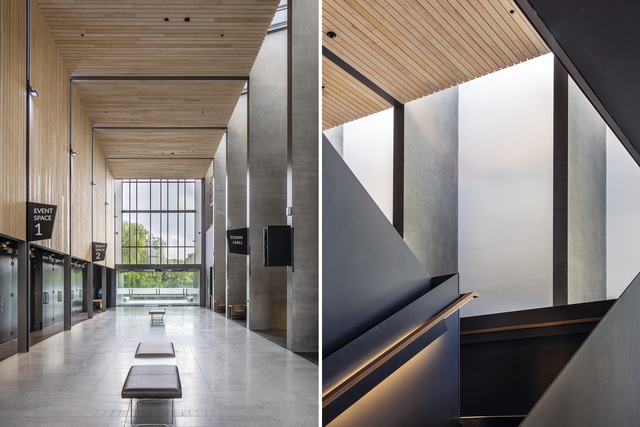
Retention is an interesting word. The proportion of old building fabric that is retained and reused in the project is actually quite small, in part because deep, new foundations were needed. The front and rear façades, parts of some floors and the clock tower have been retained. The interior of the Administration Building has been almost completely opened up while, in the Town Hall, the retention of the stage, proscenium arch and mezzanine seating area ensures that the old space remains recognisable. The jarrah floor, with its pinkish tinge, is old but not original to the Town Hall; it was reused from the Horticultural Hall.
Architecture + has given priority to the Administration Building’s ‘back of house’ spaces. Here, a long, skinny addition running the length of the building houses new lifts, stairs, foyers and staff facilities, including staffrooms and toilets. The stairwells and staffrooms are connected by a three-storeyed atrium and are open across the different floor levels.
The southern wall of glass produces an abundance of natural light as well as views of the council gardens and walkways outside. New landscaping, designed by Isthmus, is part of the current project, and is intended to improve visibility and safety, and thus to encourage increased use of the pedestrian thoroughfare to Riddiford Park. The addition’s transparency also ensures views in and that council officers are highly visible to those passing by the rear of the complex.
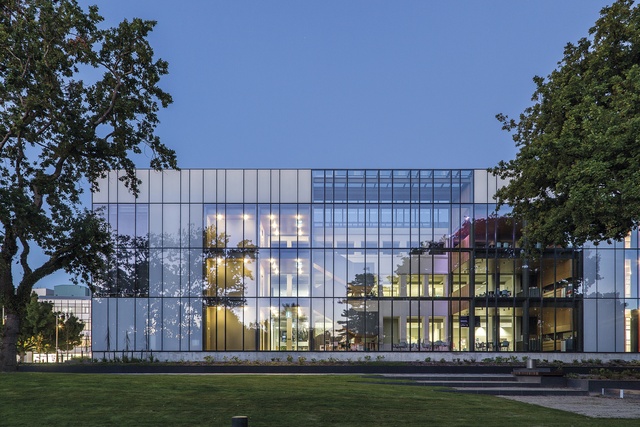
Political openness and transparency are also conveyed by the relocation of the Mayoral Office to the ground floor, accessed via the reinstated double-height entry foyer and an internal ‘street’, while the Council Chamber remains in its original location at first-floor level, fitted out with new and improved technologies.
The Events Centre is a terrific new facility for Lower Hutt. It comprises a generous foyer and reception space that provides access into the old Town Hall as well as into the new Events Centre spaces, where emphasis is on flexibility. The biggest space can be used as one or divided in two for smaller events. Floor-to-ceiling glass on the south side ensures natural light is available for events that can use it.
A downstairs café was doing good business when I visited while, above it, a series of smaller spaces is available for rental. Again, there is flexibility, with partitions that can be opened or closed, depending on the sizes of the events. A commercial kitchen means catering is in-house. This servicing is quite visible at the east end of the building’s street façade at present, although it’s nothing a bit more planting or screening could not hide.
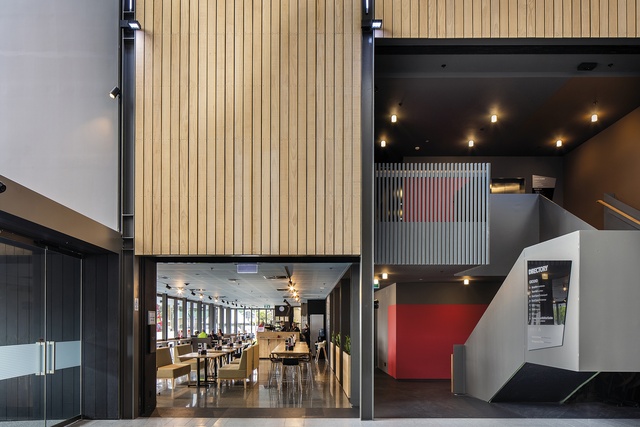
The old Horticultural Hall used to cater to a range of uses – from badminton and table tennis to cat shows and various clubs. Most of the groups now use the Events Centre, although the cost has increased and this has pushed some out. Council staff emphasise that those who use the new building have a much-improved facility for the increased cost.
The project succeeds at many levels. Old meets new in interesting ways. The form and massing of the old Town Hall and Administration Building are retained to an extent that people can still feel as though they have two out of their three old buildings, even though they have been subject to a substantial amount of work.
The urban and streetscape value of the two has been retained, while the complex as a whole has considerably higher amenity value. It is a pleasant surprise that the back of the Administration Building is such a highlight. It should encourage social interaction among staff while also communicating a sense of local government transparency to the public.
The Events Centre is a positive addition to the city. A four-storeyed hotel is under way alongside it, to ensure that multi-day events can be accommodated easily. Lower Hutt has a civic centre that retains its mid-20th-century form and image, while also being forward looking and fit for a broad range of 21st-century purposes.
– Julia Gatley
This article first appeared in Architecture New Zealand magazine.


